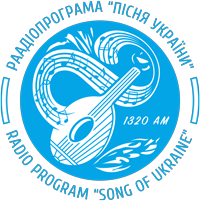February 20, 2025 marked the 120th anniversary of the birth of the great writer Ulas Samchuk.
Many of us in Toronto remember him.
Short, well-built, always smiling, sociable. A participant in public events passively and through speeches. I remember him from our first days in Toronto. In 1949, the First Plast Congress in Canada took place. It was held in the People’s House, at that time the center of Ukrainian life in the city of Toronto. I found myself on stage with Vasyl Palienko, as the secretary-secretaries of the congress. Ulas Samchuk was sitting in front of me in the first row. No, he is not a Plast, but it was not in his nature to miss such an important event of the latest emigration.
And he recorded events in the world, in Ukraine, from the lives of Ukrainians, wherever they were. In the words: “As the eye saw and the soul felt…” (On a black horse).
Ulas Samchuk was born in Derman in Volyn and spent almost his entire life wandering. The big question: Where does that river flow?.. was the guiding light of his life and became the title of the first part of the trilogy VOLYN. For this work, Samchuk is nominated for the Nobel Prize. But can the son of a stateless nation hope for it?
He mentions Derman and life in a private gymnasium in Kremyanka, his attitude towards peasant children, in the book YOUTH OF VASYL SHEREMETA, which is largely his autobiography.
The gymnasium is now called the Ulas Samchuk Lyceum. There is now the Ulas Samchuk Lounge with his photographs and other souvenirs. About Derman, he writes: “There were Derman people not only farmers, hunters, but also warriors” and describes Derman’s history. In the introduction to the book, he writes: “I want to be a chronicler of the Ukrainian space in the era that I myself see, hear, and experience.”
Samchuk illegally crosses the border into Soviet Ukraine and ends up in prison. After his release, he returns to school, but does not finish, because he is mobilized into the Polish army. After training in Tarnów, a city of recruits, he deserts and again illegally crosses the border, this time to Germany. At first, he works as a coal carrier, and eventually ends up at the university. There, his first story, “On Old Paths,” is born, which is published in the Warsaw Ukrainian magazine “Nasha Besida.”
In 1929, he moves to Prague. There, the center of emigration is located. Olena Teliga, Oksana Lyaturynska, Oleg Olzhych, Yevhen Malanyuk and many others. He studies philosophy at the Ukrainian Free University.
At that time, his first works appeared.
A young 28-year-old émigré, writer Ulas Samchuk felt and experienced the inhuman events of the famine in his homeland. Already in 1933, he wrote a small but impressively profound work “MARY”.
He dedicated the work “To the Mothers Who Died of Hunger in Ukraine in 1932-33”. The book was published in Lviv in the “Ukrainian Library” of I. Tyktor in 1934.
Samchuk called the book “Chronicle of One Life”. And the image of Mary vividly depicts not only the life of “one ordinary person”, but also depicts the events and moods of those times, depicts the tragic fate of Ukraine.
Paul Künsler made a beautiful translation of the book into German, but, unfortunately, it was freshly printed and bombed along with the printing house in Stuttgart. Translated into French, it was banned by the communists in France, and only a few copies remained.
Dr. Roma Franko, professor emeritus in Toronto, translated it into English, printed it at her own expense, and distributed it to universities and libraries.
The second work of that time is the two-volume novel THE MOUNTAINS ARE TALKING about the fight against the Magyars in Transcarpathia. One of the heroes, Jonas, tells his daughter, who wants to free him from prison: “My law is the law of honor and strength. I will not let go or submit. It is better to die free than to live as a slave.” With these words, Samchuk expressed his life credo.
At this time, the first volume of the trilogy VOLYN — WHERE THE RIVER FLOWS was born. Dedication: “To the one who first read this book, who experienced it and loved it, Maria Zots.” Maria is Samchuk’s wife. The book was published in Lviv in 1932 and received an award from the Society of Writers and Journalists in Lviv.
In 1935, the second volume WAR AND REVOLUTION was published, and in 1937, the third volume of the trilogy FATHER AND SON. In all three parts, father and son go together. Father Matviy is a symbol of a Ukrainian peasant with deep intelligence. VOLYN is an ode to the Ukrainian peasant and the land. To a large extent, Samchuk’s autobiography. At the same time, Samchuk wrote the novel KULAK, about the immortal potential of a farmer.
In October 1938, he went to Transcarpathia, where great events began. He wrote about those times: “In Transcarpathia, I literally traveled around the entire country with speeches, without passing a single city, town, or even large villages” (On a White Horse). From that time, we have the novel THE SUN FROM THE WEST.
The Magyars in Khust imprisoned Samchuk and he miraculously returned to Prague.
On June 22, 1941, Germany began the war with the Soviet Union. Ukraine found itself under the brutal occupation of the Germans. Samchuk traveled east. Along winding roads, he ended up in Rivne, where he edited the magazine “Volyn”. With Stepan Skrypnyk, later Patriarch Mstislav, who also works in the editorial office, he traveled to Kyiv. He met many new people, among them Prof. Fedor Krychevsky, whose painting, despite all the war hassles, was brought to Canada. He later wrote a book about these events, ON A WHITE HORSE.
He returned to Rivne, continued to work as an editor, and was imprisoned by the Germans for the article “So it was, so it will be…”. He later mentions this in the book FIVE AFTER TWELFTH.
Film director Ivan Kavaleridze arrives in Rivne with an entire studio from the Carpathians, where the film “Olexa Dovbush” was being filmed. Samchuk met actress Tanya Prakhova, later his wife. Kavaleridze is fascinated by “Volyn”. He wants to make a film.
Events force him to move west. This time of the journey is mentioned in the book ON A BLACK HORSE.
His further life journey is described in the already mentioned book FIVE AFTER TWELFTH. NOTES ON A RUN, which begins with the date January 6, 1945 with the heading: “I saw Berlin dying”. On August 9, it is written: “…The radio is speaking. This day the second atomic bomb was dropped on Nagasaki. Japan surrenders. The end of the Second Planetary War. And the end of the gunpowder era. The atomic era is coming…”. These are the last words in the book.
DP camps (displaced persons) in Germany are a haven for refugees of various nationalities from the Moscow paradise. Samchuk and his wife ended up in the DP camp. He is the founder and organizer of the MUR artists’ association – the Artistic Ukrainian Movement, becomes its head, travels to DP camps with reports. During this time, the book PLANET OF DP was later published. It contains the words: “An exceptional, elusive mood of our destiny, unprecedented in the history of the peoples of Europe. Sometimes it seems that this is unreality. Why and for what are we here? Incomprehensible whims of fate.”
Just before the Samchuks left for Canada, the first volume of the OST trilogy, MOROZIV KHUTIR, was published in Regensburg, Germany. The second volume, DARKNESS, and the third, ESCAPE FROM ONESELF, were published much later. The trilogy begins in 1917 in the Kaniv region. The four sons of Patriarch Grigory go their separate ways. There, they adapt, and are persecuted, and exiled, and, finally, the final stop in Edmonton. The ideological divergence and difference in the thinking of Ukrainians of that time are interesting.
In 1948, the Samchuks left for Canada. Difficult beginnings, physical labor of both Samchuks, one at night, the other during the day… in the end, life gets in order and Samchuk publishes his new works. A chronicle novel, WHAT THE FIRE DOESN’T HEAL, about the UPA’s struggle against the German occupiers and Russian communist totalitarianism, appears, where his Derman is the center of action. The book is dedicated: “To my Derman and my ancestors.” There are the words: …”Upisty kharakterniki. Not the fighter who takes revenge, but the one who defends the right, truth and law.”
A new novel, ON SOLID LAND, is published. The writer experiences the successes and failures of new emigrants in Canada, often with humor. “The book is dedicated to the memory of the centennial anniversary of the unification of the provinces of Canada and the 75th anniversary of the settlement of Ukrainians in this country – with a sense of deep respect for their creative, constructive and organizational genius…”.
A book about Ukrainians in America, IN THE FOOTSTEPS OF THE PIONEERS, is being published. Samchuk writes in the introduction: “This book is about our compatriots who were the first to enter the land of the United States of America and the first to begin to organize themselves. The book is dedicated to the Ukrainian People’s Union and to the memory of its noble founders, builders and standard-bearers, I dedicate this book to ours.”
In the book LIVING STRINGS. BANDURA AND BANDURA PLAYERS, his love for music and bandura is felt, as well as his admiration and appreciation for the work of the bandura band from Detroit under the direction of Hryhoriy Kytasty.
In addition, we have “DOCUMENTS OF THE DAY – journalism of Ulas Samchuk 1941-1943” – the times of the German occupation. These are collected materials from the Rivne Oblast Archive, prepared by a scientific editorial team.
Ulas Samchuk passed away on August 8, 1987 in Toronto.
On February 20, 2005, a ceremonial opening of a monument to Ulas Samchuk took place in Rivne, Volyn, on the 100th anniversary of his birth. The white veil from the monument was removed by Oksana Bilozir, Minister of Culture of Ukraine, Vasyl Chervony, Head of the Rivne Oblast State Administration, Yuriy Bidyuk, Head of the City Council, and Yaroslav Sokolyk from Toronto, the executor of the last will of Tanya and Ulas Samchuk.
The broad song “My Volyn, my beauty, my sunny land…” swept through the city, Volyn, and Ukraine… Oksana Bilozir’s passionate words were heard: “…Ulas Samchuk lived in a foreign land, but his soul always yearned for his native people, for his native fatherland… …Because Love was the truth that God gave him from birth. Love for his native Derman, where he said everywhere that my Derman was the center of centers on the planet, love for Volyn, love for Ukraine, love for his native land. And it was this love that gave him the creative power to fill our hearts with faith in the future of his state! He wrote the truth, the TRUTH about Ukraine. And today Samchuk returns to Ukraine, returns to Ukrainian culture, gives us strength, faith, and confidence…”.
Academician Mykola Zhulynsky also spoke: “…Not many writers of the 20th century wrote works of such truthful panoramic content as the trilogies VOLYN and OST. His works are written with the truth as close to the truth as possible…”.
The 100th anniversary of their Great Synod was celebrated in the Rivne region in a grand and festive manner on — Ulas Samchuk.
The Government of Ukraine issued an envelope with Samchuk’s printed stamp and a commemorative coin on the occasion of the centenary: 2 hryvnias, on which on one side is Samchuk’s face, on the other side are the horses of the artist Myron Levytsky from the cover of the book “On a Black Horse”.
A grand concert in Rivne, the unveiling of a monument in Rivne and Zdolbuniv, and celebrations in Derman completed the centenary of Samchuk in Ukraine. For his centenary, Samchuk returned to Ukraine on a WHITE HORSE. Newspapers in Ukraine wrote RETURNED… IN BRONZE.
Many of us experienced the most tragic and dynamic events of the last century. And fate gave Samchuk a great talent to see, appreciate and record them for future generations.
“I am not a writer of the Ukrainian people because I know how to write. I am a writer because I feel a duty to the people”. And he fulfilled his duty. Ulas Samchuk is a chronicler of Ukraine.
Oksana Bryzhun-Sokolyk










